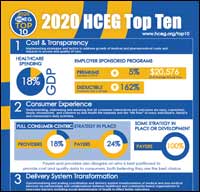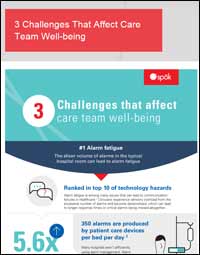Mobile health (often referred to as mHealth) is all the rave in healthcare right now. According to one recent statistical data piece compiled by Health IT Outcomes, close to 93 percent of physicians believe that mobile health apps can improve patients’ health.
Therefore, healthcare organizations looking to formulate an mHealth strategy are likely to consider mobile apps the right place to start delivering improved patient experience and services. Rightly so, the adoption of these apps can be highly beneficial for both the provider as well as consumers.
However, with the amount of options available in the marketplace today, designing and developing an mHealth app that can attract customers for its uniqueness has become a huge challenge for healthcare providers. Having a carefully designed and well-functioning app simply isn’t enough. It also needs to sustain amid the rising competition.
There are a few crucial factors that providers should keep in mind before getting an mHealth app developed.
Know the Pain Points and Needs of your Target Audience
The key to successful mhealth app design lies in knowing how and why users will want to use the app, knowing customer pain points and then designing in a way that you can solve their problems.
Therefore, before healthcare organizations develop an mHealth app should identify their customers’ pain points and how their problems can be solved, and then figure out why an mHealth app would be the best way to solve it.
Once an assessment of the requirements are completed and an mHealth app would fulfill those requirements, the next step is to determine the target group (for example, General Health and Fitness Apps, Chronic Care Management, Diabetes Management Apps, Medication Management Apps, Personal Health Record (PHR) Apps, Professional Medical Applications, etc.) and then include features that truly meet the needs of that particular group.
Dr Vinati Kamani, dentist turned healthcare author, in one of her recent articles explains how keeping end users in mind is the ultimate goal when it comes to developing mHealth apps: “It is extremely critical to collect all necessary data concerning usage, understand what all the stakeholders interested in the app might be looking for, and use the acquired information throughout the development lifecycle. One best practice is to involve practicing healthcare providers, specialized in the area your app will be servicing in, to assess the key issues the app will resolve for the users and to develop the functionality that will be most usable for your audience.”
Healthcare providers can also develop a custom application rather than an off the shelf solution. In this way, features that aren’t absolutely required or don’t add value to the app can be left out; you get a solution that does both – meets the needs of your target audience and is cost-effective for you.
Designing for Scalability, Simplicity and Sustainability
The next crucial consideration deals with optimizing the app to be as simple, scalable, and easy to use as possible.
To begin with, the registration/sign-in process should be hassle-free and shouldn’t demand much of the user’s time or effort. One best practice would be to avoid employing too many clicks and screens for performing these actions. You can provide the option of additional verifications when the app hasn’t been actively used for quite some time.
Then again, it would be a useful add-on to make information on your app easily retrievable in the event of an emergency. For instance, quick access to useful information such as placing the doctor’s phone number and information about nearby clinics on the homepage of the app itself can help the patient retrieve such crucial data without having to log in during an emergency.
Try balancing options out in a way that depicts that all scenarios have been taken into consideration.
Another best practice would be to integrate the platform with a dedicated cloud server to make the platform more interoperable for both end users and care providers. Cloud platforms also provide the option to encrypt the confidential information within the mHealth app to ensure it isn’t accessed during data breaches or misused by a hacker.
Ensure that the content on the various pages of the mHealth app is uniform, identical and easy to read, and the layout of these pages is equally appealing for the users. Also, try to keep the alignment and spacing uniform throughout. Users usually favor pages that have soothing themes and colors. Don’t go overboard with design.
mHealth apps should keep in mind the app’s target audience at all times, especially when designing it for the end user. For instance, older people might need bigger icons and larger text, and people with certain health conditions might need an app that does not attract gawkers.
Trying to make the app as scalable and sustainable as possible may seem like a lot of work in the beginning, but it will pay off by retaining users and keeping them coming back for more in the long run.
Taking a Second Opinion from Compliance Experts
When getting an mHealth app developed, it’s crucial to understand the different types of data and information that fall under the Health Insurance Portability and Accountability Act (HIPAA). The first thing is to discern whether the mHealth app is going to collect, store, or transmit protected health information (PHI) at any given point in time. PHI comprises sensitive patient information regulated by HIPAA.
An mHealth app that handles PHI needs to remain HIPAA compliant at all times. In addition, mHealth apps that exchange information with covered entities for medical reasons, also need to be HIPAA compliant.
To make sure the mHealth app remains HIPAA compliant, adhere to these 4 rules:
Privacy Rule
Security Rule
Enforcement Rule
Breach notification Rule
To create a secure app that’s fully HIPAA compliant, using reliable providers, a set of technical tools like libraries and third-party services isn’t enough. Not only does the data have to be encrypted in the mHealth app, but the data also can’t be accessed if the server or device is physically compromised.
Remember to assess how much information the app actually needs to operate and bring value to the user. HIPAA compliant apps don’t collect any information that isn’t necessary; if yours does, you’ll be spending resources on protecting information you don’t actually need.
When the consumer is kept at the apex of every decision while developing an app, the app will truly contribute toward increasing the bottom line of healthcare organizations and fortify customer relationships.
About the Author:
Rahul Varshneya is the co-founder and president of Arkenea, a digital health consulting firm. Mr. Varshneya has been featured as a technology thought leader across Bloomberg TV, Forbes, HuffPost, Inc, among others.






Leave A Comment